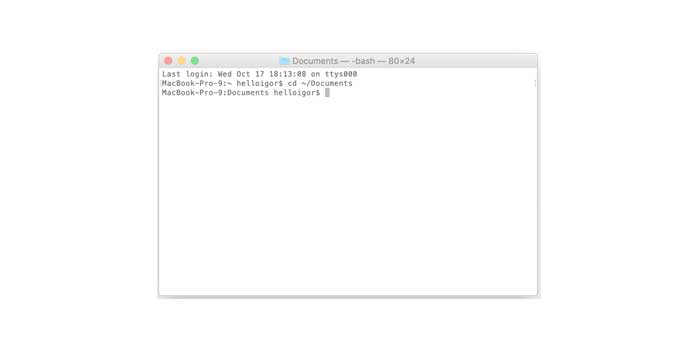

- RESTORE DELETED FILES MAC OS MANUALLY HOW TO
- RESTORE DELETED FILES MAC OS MANUALLY SOFTWARE
- RESTORE DELETED FILES MAC OS MANUALLY DOWNLOAD
Besides can be downloaded for free, tutorials how to install and how to use them is also very complete.
RESTORE DELETED FILES MAC OS MANUALLY SOFTWARE
This software is very similar to the existing recovery software on windows. Looking for a proven solution to recover deleted files on Mac Here are some reliable methods to help you restore your lost data (macOS 10.15 Catalina verified). Recovery software works on any file system, even at volume with missing or corrupted files. Disk Drill able to restore many different file types, including:Īdditionally, The best Mac data recovery software is also able to recover all major file types and file systems, such as: HFS/HFS+, FAT and NTFS file systems. With Disk Drill, you can restore the data that has been lost from your MAC device. If you have experienced problems such as loss of a partition on a hard drive or lost music in MP3, or may be accidental deletion important photos from the camera, you do not need to be anxious or worried, Disk Drill is the solution. It serves as a complete recovery tool to restore lost or deleted files from Mac Mini hard disk in all expected and unexpected instances. If you booted from a USB disk, click “Continue” to advance to the installer.Disk Drill – best Mac data recovery software. Go with Mac recovery, which is considered to be the most powerful data recovery program designed for Apple Mac Mini systems. If you booted from a functioning recovery partition, click the “Reinstall macOS” button. With your information wipe complete, you are now ready to reinstall macOS.

If you choose three or five passes, you might want to leave this running overnight. If you opted to wipe your drive securely, this might take a while-30 minutes to an hour is not unreasonable for one pass. Just give your drive a name (I recommend “Macintosh HD”, just for consistency’s sake), then click “Erase” to start the overwriting process.

You only need to write over a drive once to securely wipe it, but if you’re paranoid you can also wipe it three or five times.Ĭlick “OK” once you’ve decided, but remember: if your Mac has a solid state drive, you do not need to use these options. Now move the dial up, to randomly write data over your entire drive. You still need to wipe the drive, however, or your files will remain in place, so skip to the end of this step to do so.) (If your Mac has a solid state drive, you can skip this part: your SSD will already securely erase files thanks to TRIM. If you’re wiping a mechanical drive, click “Security Options” in the window that pops up. Click your primary drive, then click “Erase” If not you can find Disk Utility in the menu bar: click Utilities then Disk Utility. To get started, click the Disk Utility option.ĭepending on how you started Recovery Mode, you may be presented with the option to start Disk Utility right away, as seen above.

We’ve shown you how to securely wipe a hard drive with your Mac, and doing so in Recovery Mode isn’t really different from doing so within macOS. If you want a truly clean installation, however, you need to first wipe your hard drive. We recommend backing up files before you do this, just in case, but otherwise you’re ready for step three. Your user accounts and files will stay exactly where they are-only your operating system will be overwritten. If you want to re-install your operating system, but leave your files in place, you can skip this step. RELATED: 8 Mac System Features You Can Access in Recovery Mode Step Two: Securely Wipe Your Hard Drive (Optional) Once you’ve managed to open up the Recovery Mode in some fashion, we can move on to wiping your drive securely.
RESTORE DELETED FILES MAC OS MANUALLY DOWNLOAD
You can access recovery without a partition using Network Recovery: hold Command+Shift+R while turning on your Mac and it will download the Recovery features for you. Failing that, you can create a bootable USB installer for macOS Sierra, and boot from that by holding “Option” while turning on your Mac. If neither of these options work, don’t panic! You’ve got a couple of options yet.


 0 kommentar(er)
0 kommentar(er)
